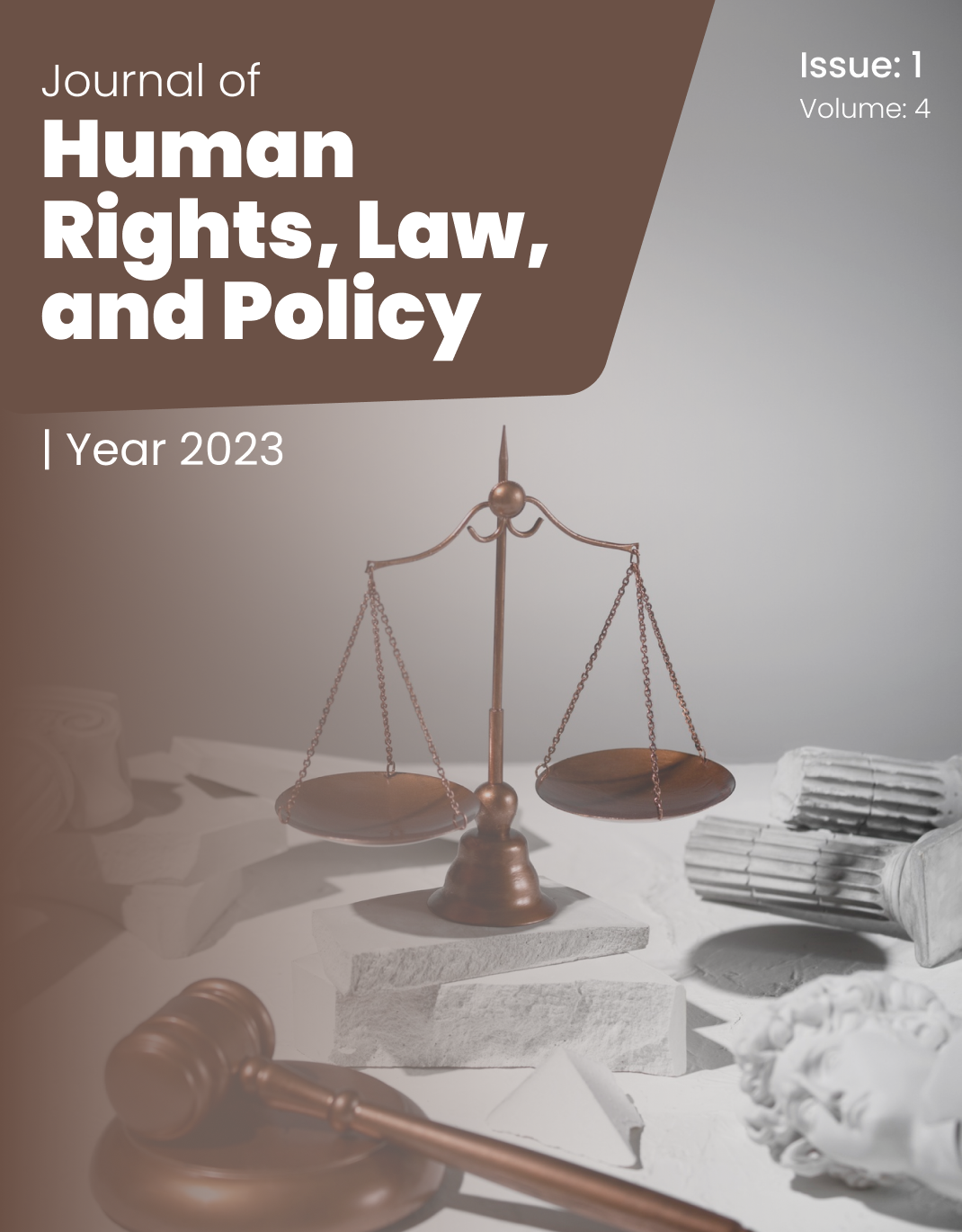Barriers to Accessing Legal Aid in Rural Areas: A Qualitative Exploration
Keywords:
Legal aid, rural justice, access to justice, qualitative research, legal empowerment, Iran, barriers to legal servicesAbstract
This study aimed to explore the multidimensional barriers that impede access to legal aid among rural populations through the perspectives of individuals with direct or indirect experience in rural legal contexts. Using a qualitative design, semi-structured interviews were conducted with 26 participants residing in Tehran, each of whom had strong personal or professional ties to rural communities across Iran. Participants were selected through purposive sampling, and interviews continued until theoretical saturation was achieved. The data collection instrument consisted of open-ended questions covering structural, socioeconomic, cultural, and policy-related barriers to legal aid. All interviews were transcribed verbatim and analyzed using thematic analysis supported by NVivo software. Coding followed an inductive-deductive process, including open, axial, and selective coding to identify key themes and subthemes. Analysis revealed four major thematic categories: (1) structural and institutional barriers, including lack of legal infrastructure, bureaucratic complexity, and fragmented referral systems; (2) socioeconomic constraints, such as financial insecurity, low educational attainment, and technological exclusion; (3) cultural and social norms, including stigma, patriarchal structures, and reliance on informal justice; and (4) policy and governance failures, including poor rural legal planning, weak funding, and political neglect. Participants reported significant distrust in formal institutions and a strong preference for traditional or informal dispute mechanisms. Women and economically vulnerable individuals experienced disproportionately higher barriers. The findings underscore that access to legal aid in rural settings is hindered not only by physical distance and resource scarcity but also by deep-rooted cultural, economic, and policy-related factors. Addressing these barriers requires a multifaceted, inclusive, and locally responsive approach to legal service design and delivery.
Downloads
References
Banerjee, A., Iyer, L., & Somanathan, R. (2007). History, social divisions, and public goods in rural India. Journal of the European Economic Association, 5(2–3), 639–647. https://doi.org/10.1162/JEEA.2007.5.2-3.639
Coumarelos, C., Macourt, D., People, J., McDonald, H. M., Wei, Z., Iriana, R., & Ramsey, S. (2012). Legal Australia-Wide Survey: Legal Need in Australia. Law and Justice Foundation of New South Wales.
Gauri, V., & Brinks, D. M. (2008). Courting social justice: Judicial enforcement of social and economic rights in the developing world. Cambridge University Press.
Golub, S. (2003). Beyond rule of law orthodoxy: The legal empowerment alternative. Carnegie Endowment for International Peace Working Papers, 41.
Gramatikov, M., & Porter, R. (2011). Yes, I can manage: Measuring access to justice through household surveys. Hague Institute for the Internationalisation of Law.
Halliday, S., Karpik, L., & Feeley, M. M. (2007). Fighting for political freedom: Comparative studies of the legal complex and political liberalism. Hart Publishing.
Harper, E. (2011). Customary justice: From program design to impact evaluation. IDLO.
Jivan, V., & Forster, C. (2007). Translating CEDAW into law: CEDAW legislative compliance in nine Pacific Island countries. UNIFEM Pacific Regional Office.
Kirkland, A. (2021). Access to justice and the rural-urban divide: Legal deserts and the politics of place. Law & Society Review, 55(3), 523–556. https://doi.org/10.1111/lasr.12501
Open Society Justice Initiative. (2015). Legal aid in crisis: Access to justice and the global financial crisis. Open Society Foundations.
OECD. (2019). Equal access to justice for inclusive growth: Putting people at the centre. OECD Publishing. https://doi.org/10.1787/597f5b7f-en
Patel, M., & Karkara, R. (2017). Voices of rural women: Barriers to legal empowerment. UN Women South Asia.
Pleasence, P., Balmer, N. J., & Sandefur, R. L. (2013). Paths to justice: A past, present and future roadmap. University College London.
Rasiah, R., & Varughese, A. (2020). Bridging the digital divide in rural legal access: A Malaysian perspective. Information Development, 36(2), 157–169. https://doi.org/10.1177/0266666919869321
Roche, J. M., Sandefur, R. L., & Malamud, O. (2022). Justice needs and satisfaction in low-income communities: A qualitative approach. Social Problems, 69(4), 915–935. https://doi.org/10.1093/socpro/spab005
Sadeghi, H., & Lotfi, M. (2020). Legal aid and access to justice in Iran: A critical review. Iranian Journal of Law and Society, 17(3), 55–76.
Sandefur, R. L. (2008). Access to civil justice and race, class, and gender inequality. Annual Review of Sociology, 34, 339–358. https://doi.org/10.1146/annurev.soc.34.040507.134647
Sandefur, R. L., & Smyth, R. (2011). Access across America: First report of the civil justice infrastructure mapping project. American Bar Foundation.
Skaar, E., Garcia-Godos, J., & Collins, C. (Eds.). (2016). Transitional justice in Latin America: The uneven road from impunity. Routledge.
UNDP. (2016). Strengthening access to justice and legal empowerment in the Arab States. United Nations Development Programme.
UNODC. (2016). Model Law on Legal Aid in Criminal Justice Systems. United Nations Office on Drugs and Crime.
UN Women. (2019). Progress of the world’s women 2019–2020: Families in a changing world. UN Women.
World Justice Project. (2023). Global insights on access to justice 2023. https://worldjusticeproject.org
Downloads
Published
Submitted
Revised
Accepted
Issue
Section
License

This work is licensed under a Creative Commons Attribution-NonCommercial 4.0 International License.

